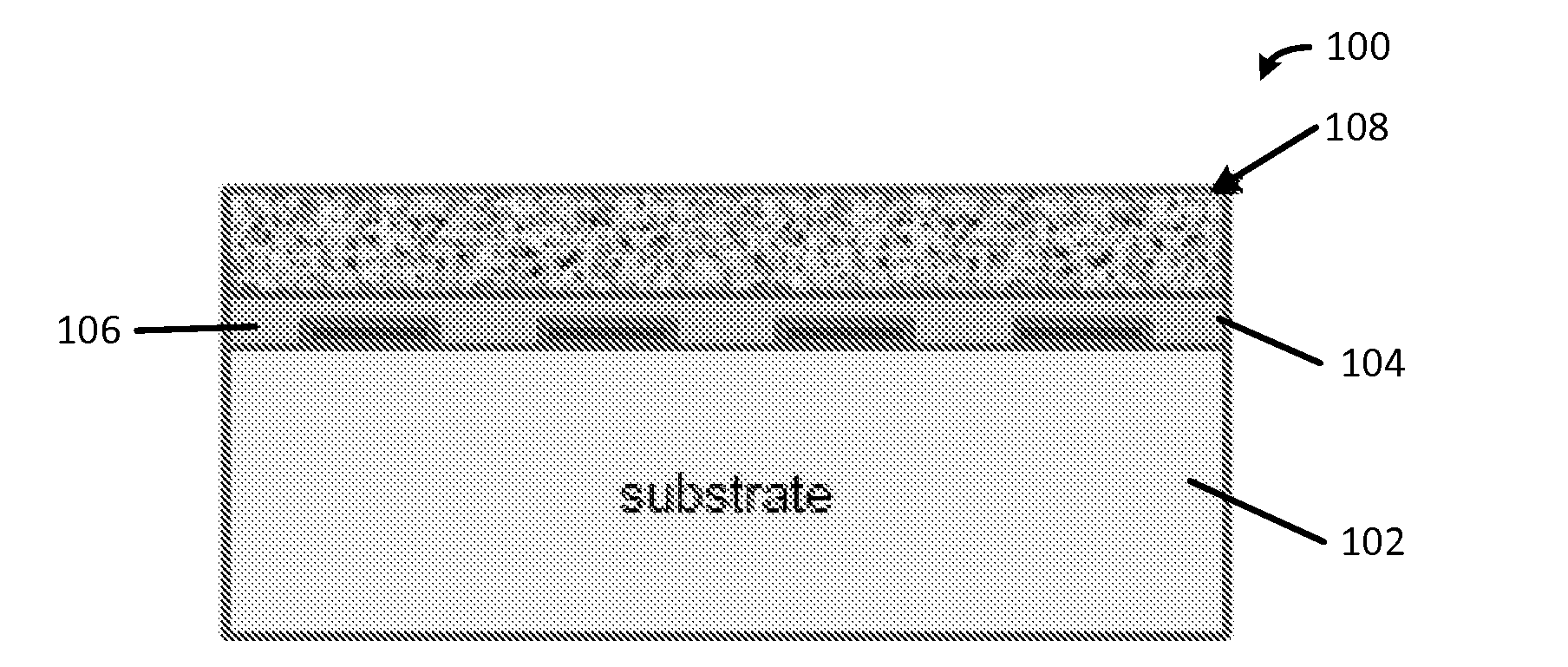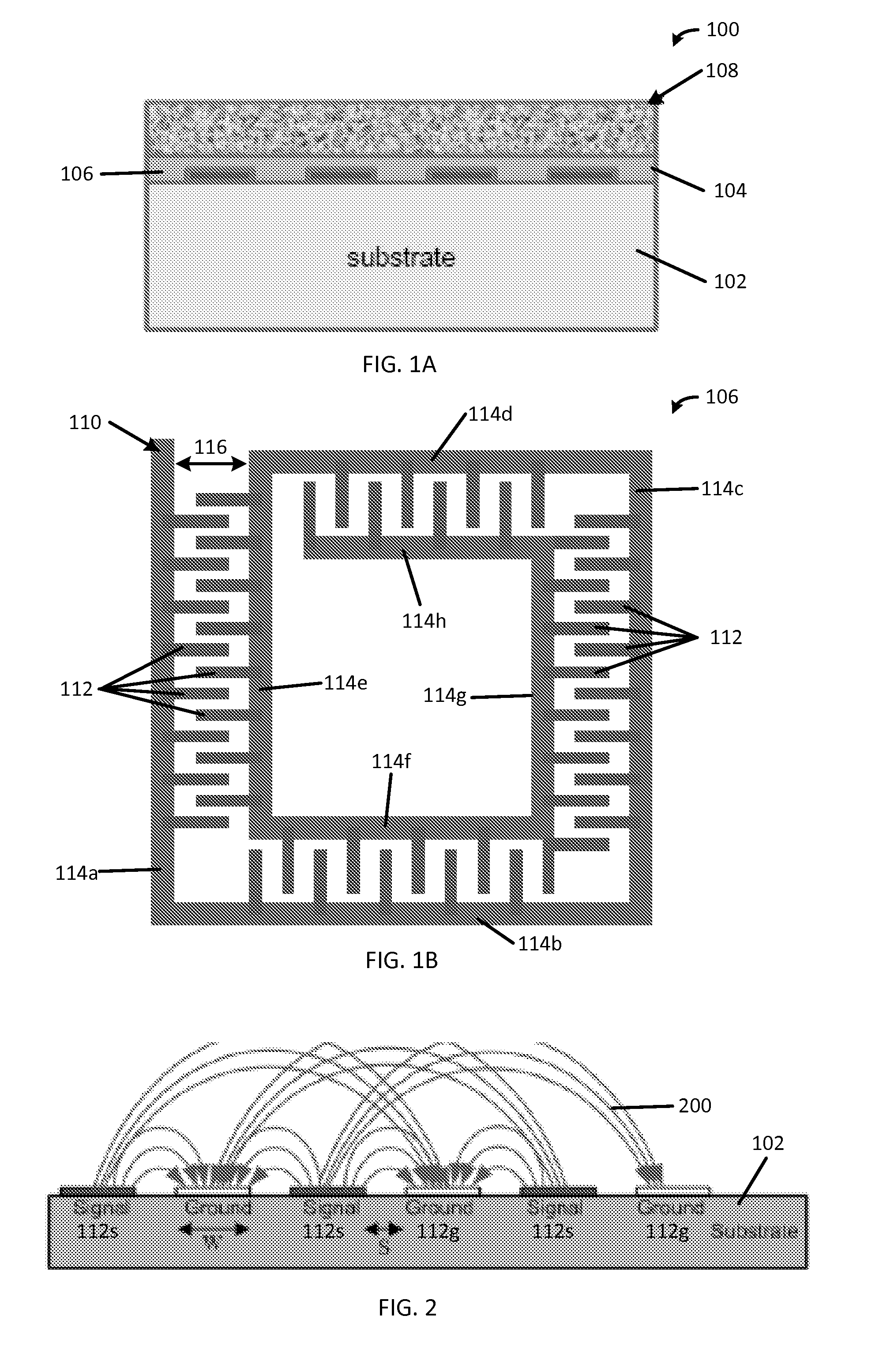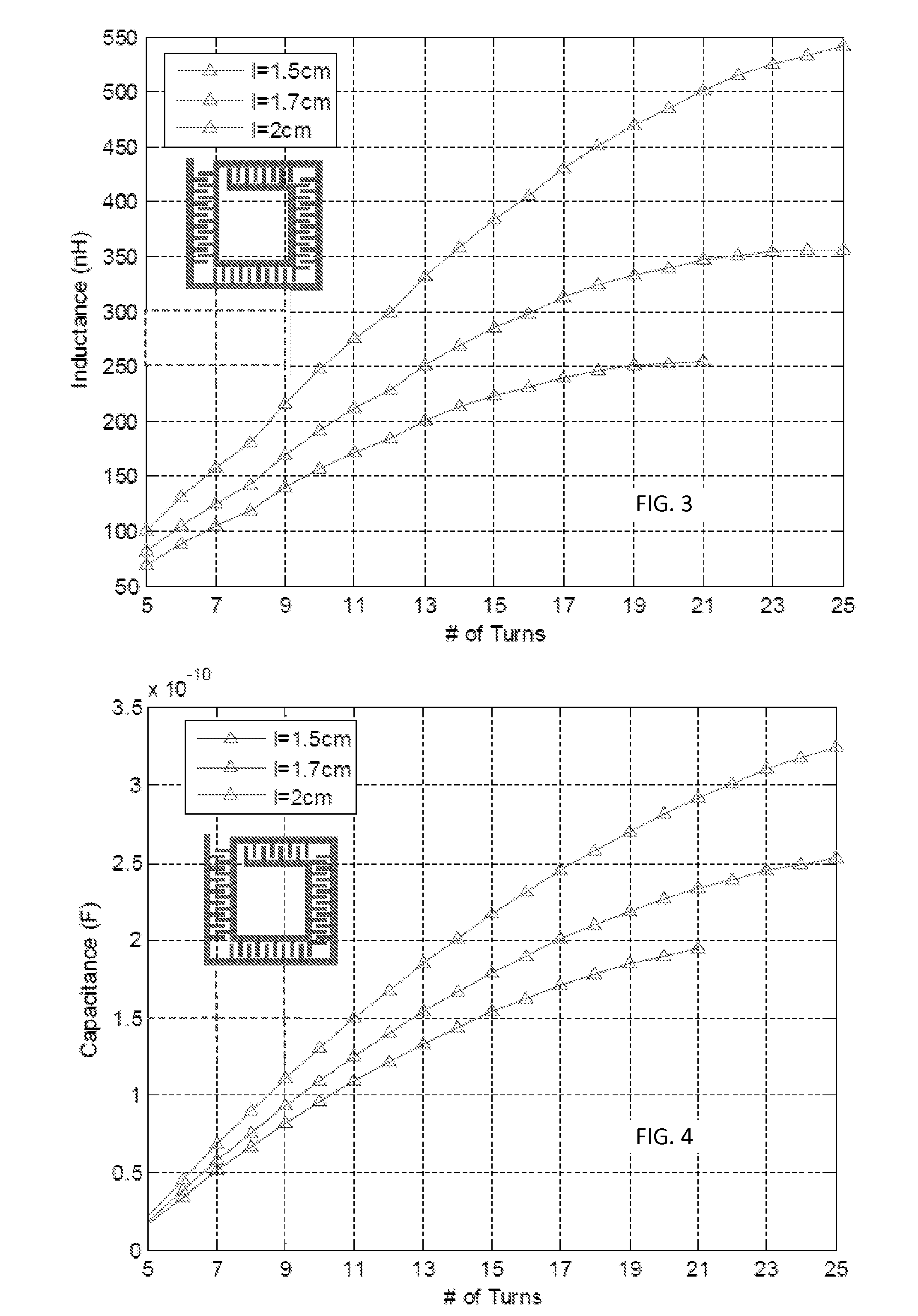Passive wireless self-resonant sensor
a self-resonant sensor and wireless technology, applied in the field of sensors, can solve the problems of reducing reducing the surface area of traditional coating techniques, such as spin coating, and utilizing dissolution, so as to improve the coupling between the sensor and the reader, improve the effect of the coupling and simplify the fabrication
- Summary
- Abstract
- Description
- Claims
- Application Information
AI Technical Summary
Benefits of technology
Problems solved by technology
Method used
Image
Examples
Embodiment Construction
[0058]While the making and using of various embodiments of the present invention are discussed in detail below, it should be appreciated that the present invention provides many applicable inventive concepts that can be embodied in a wide variety of specific contexts. The specific embodiments discussed herein are merely illustrative of specific ways to make and use the invention and do not delimit the scope of the invention. The discussion herein relates primarily to chemical sensors and electronics, but it will be understood that the concepts of the present invention are applicable to any self-resonant sensor.
[0059]The present invention provides a wireless self-resonant sensor having: (1) high responsiveness to changes in a liquid by conformal coating of a polymer on a high surface area material, such as an open nanowire mat, that allows the manipulation of surface properties within capillary-like voids to select what liquid may enter those voids and be sensed; (2) improved couplin...
PUM
| Property | Measurement | Unit |
|---|---|---|
| length | aaaaa | aaaaa |
| length | aaaaa | aaaaa |
| resonant frequency | aaaaa | aaaaa |
Abstract
Description
Claims
Application Information
 Login to View More
Login to View More - R&D
- Intellectual Property
- Life Sciences
- Materials
- Tech Scout
- Unparalleled Data Quality
- Higher Quality Content
- 60% Fewer Hallucinations
Browse by: Latest US Patents, China's latest patents, Technical Efficacy Thesaurus, Application Domain, Technology Topic, Popular Technical Reports.
© 2025 PatSnap. All rights reserved.Legal|Privacy policy|Modern Slavery Act Transparency Statement|Sitemap|About US| Contact US: help@patsnap.com



